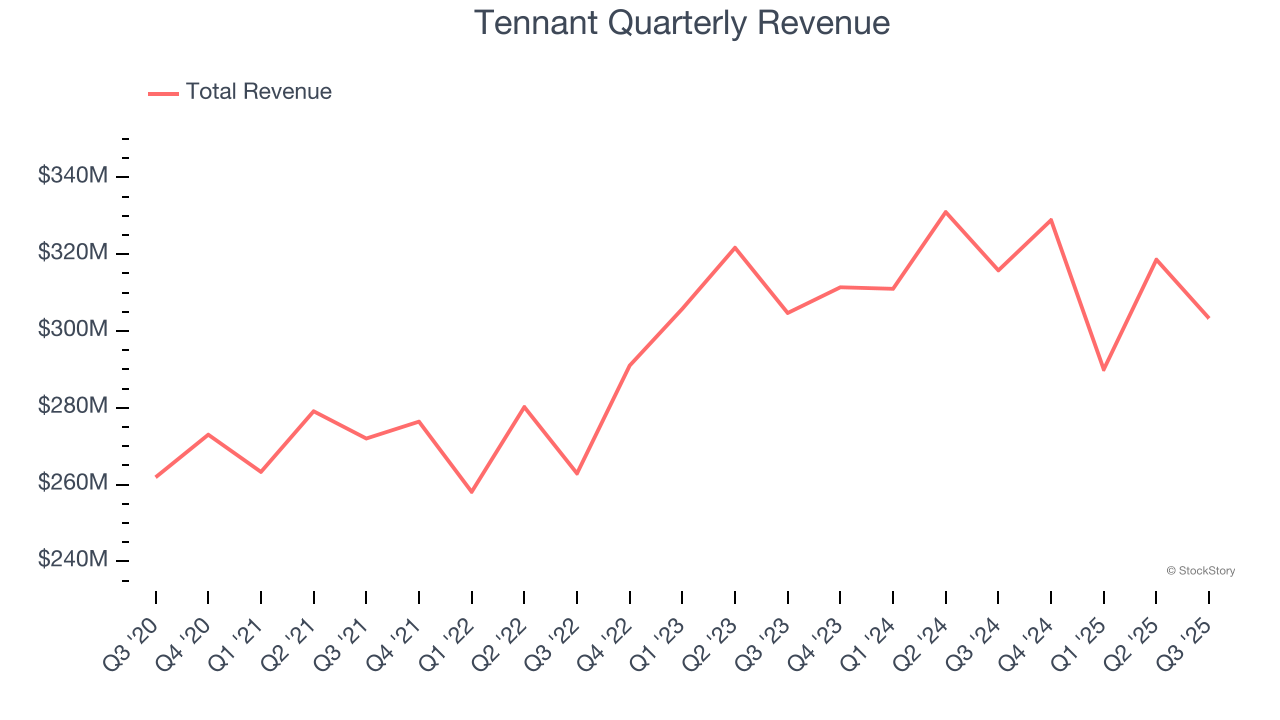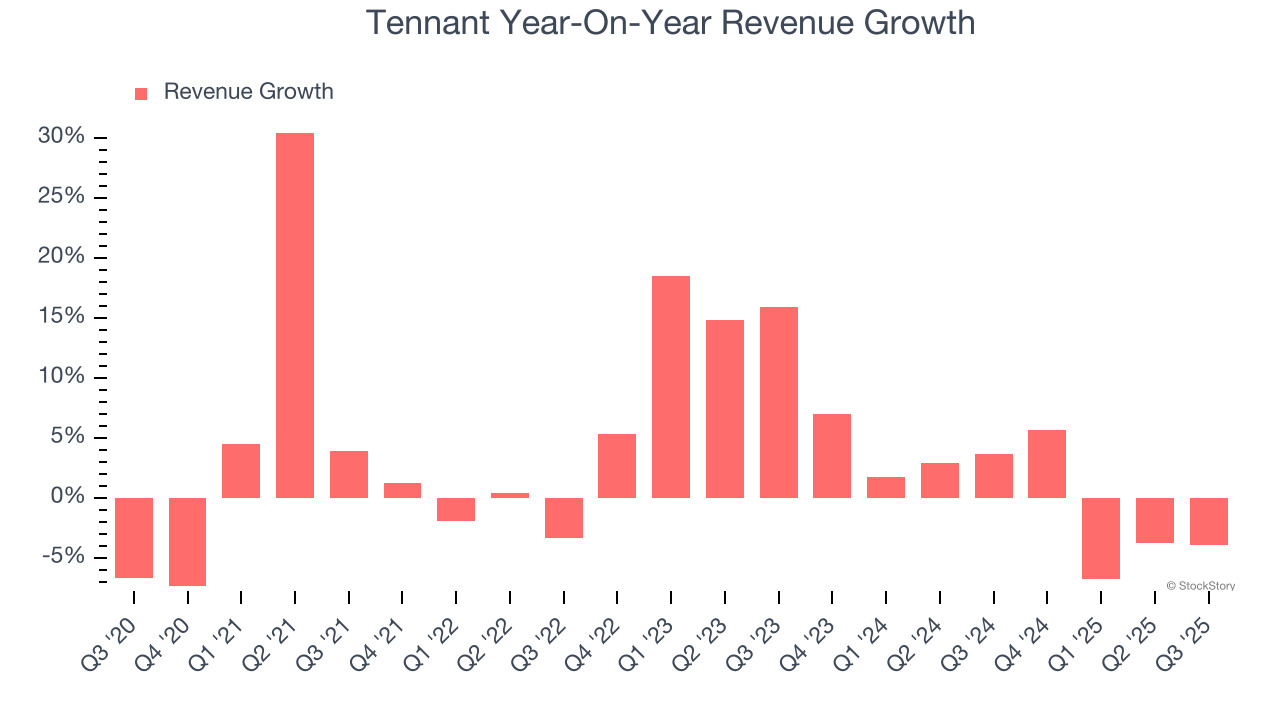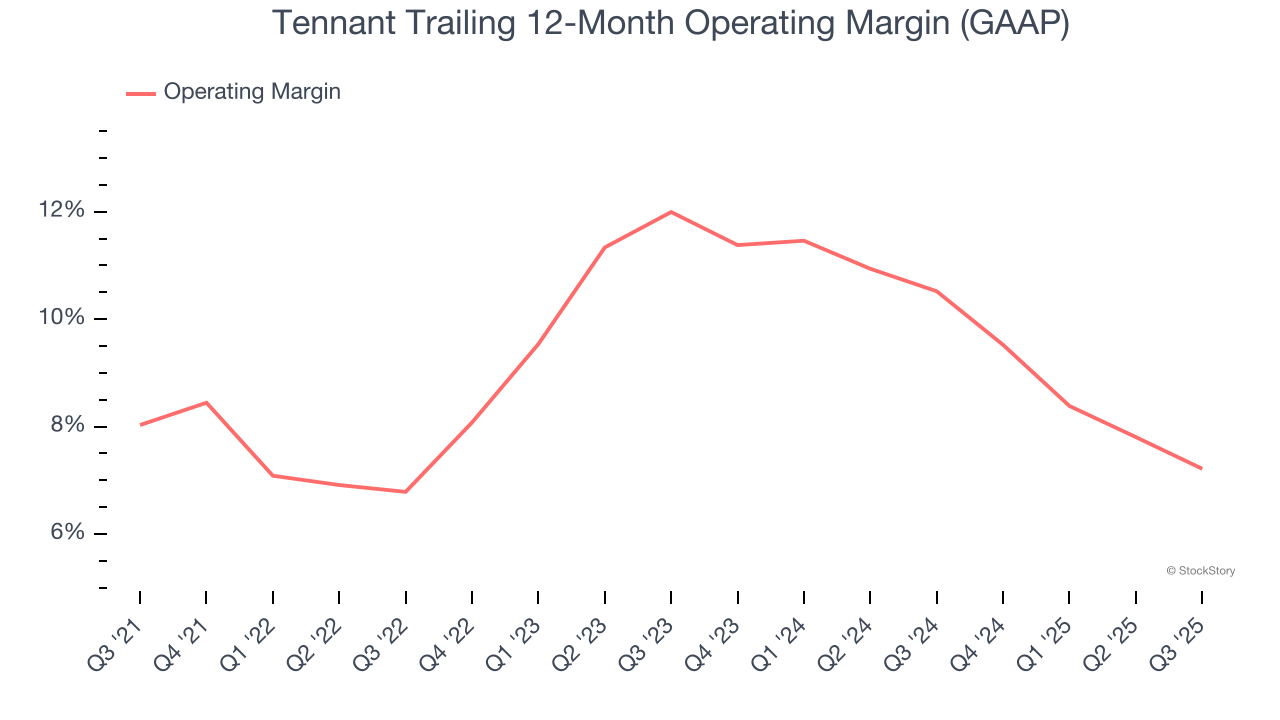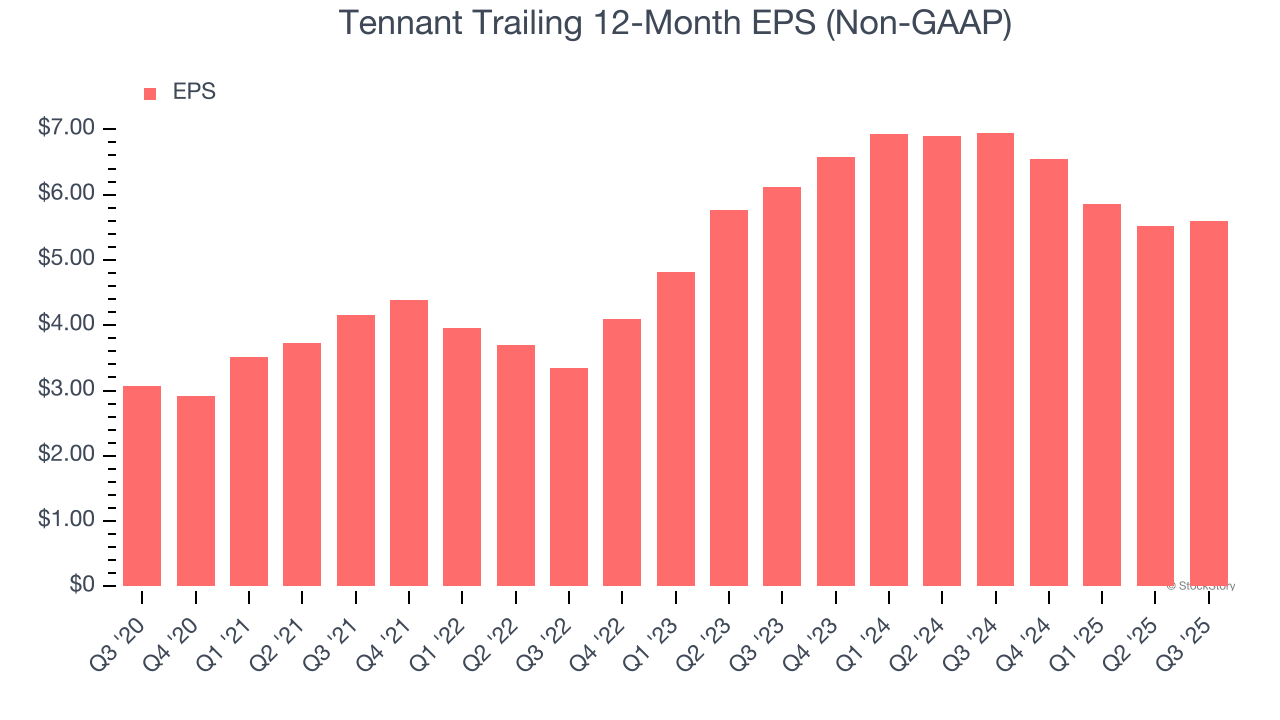|
|
|

|
|||||

|
|

Industrial cleaning equipment manufacturer Tennant Company missed Wall Street’s revenue expectations in Q3 CY2025, with sales falling 4% year on year to $303.3 million. On the other hand, the company’s outlook for the full year was close to analysts’ estimates with revenue guided to $1.23 billion at the midpoint. Its non-GAAP profit of $1.46 per share was 2.9% below analysts’ consensus estimates.
Is now the time to buy Tennant? Find out by accessing our full research report, it’s free for active Edge members.
"We are pleased to report third quarter results that demonstrate the resilience of our business model even as we navigate an increasingly complex and uncertain market environment," said Dave Huml, Tennant President and Chief Executive Officer.
As the world’s largest manufacturer of autonomous mobile robots, Tennant (NYSE:TNC) designs, manufactures, and sells cleaning products to various sectors.
A company’s long-term performance is an indicator of its overall quality. Any business can experience short-term success, but top-performing ones enjoy sustained growth for years. Over the last five years, Tennant grew its sales at a sluggish 3.9% compounded annual growth rate. This fell short of our benchmark for the industrials sector and is a tough starting point for our analysis.

We at StockStory place the most emphasis on long-term growth, but within industrials, a half-decade historical view may miss cycles, industry trends, or a company capitalizing on catalysts such as a new contract win or a successful product line. Tennant’s recent performance shows its demand has slowed as its revenue was flat over the last two years.

This quarter, Tennant missed Wall Street’s estimates and reported a rather uninspiring 4% year-on-year revenue decline, generating $303.3 million of revenue.
Looking ahead, sell-side analysts expect revenue to grow 3.2% over the next 12 months. Although this projection implies its newer products and services will spur better top-line performance, it is still below average for the sector.
Microsoft, Alphabet, Coca-Cola, Monster Beverage—all began as under-the-radar growth stories riding a massive trend. We’ve identified the next one: a profitable AI semiconductor play Wall Street is still overlooking. Go here for access to our full report.
Operating margin is one of the best measures of profitability because it tells us how much money a company takes home after procuring and manufacturing its products, marketing and selling those products, and most importantly, keeping them relevant through research and development.
Tennant’s operating margin might fluctuated slightly over the last 12 months but has generally stayed the same, averaging 9% over the last five years. This profitability was higher than the broader industrials sector, showing it did a decent job managing its expenses.
Analyzing the trend in its profitability, Tennant’s operating margin might fluctuated slightly but has generally stayed the same over the last five years. This raises questions about the company’s expense base because its revenue growth should have given it leverage on its fixed costs, resulting in better economies of scale and profitability.

This quarter, Tennant generated an operating margin profit margin of 7.4%, down 2.3 percentage points year on year. Since Tennant’s operating margin decreased more than its gross margin, we can assume it was less efficient because expenses such as marketing, R&D, and administrative overhead increased.
We track the long-term change in earnings per share (EPS) for the same reason as long-term revenue growth. Compared to revenue, however, EPS highlights whether a company’s growth is profitable.
Tennant’s EPS grew at a remarkable 12.7% compounded annual growth rate over the last five years, higher than its 3.9% annualized revenue growth. However, we take this with a grain of salt because its operating margin didn’t improve and it didn’t repurchase its shares, meaning the delta came from reduced interest expenses or taxes.

Like with revenue, we analyze EPS over a more recent period because it can provide insight into an emerging theme or development for the business.
Tennant’s two-year annual EPS declines of 4.3% were bad and lower than its flat revenue.
Diving into the nuances of Tennant’s earnings can give us a better understanding of its performance. Tennant’s operating margin has declined over the last two years. This was the most relevant factor (aside from the revenue impact) behind its lower earnings; interest expenses and taxes can also affect EPS but don’t tell us as much about a company’s fundamentals.
In Q3, Tennant reported adjusted EPS of $1.46, up from $1.39 in the same quarter last year. Despite growing year on year, this print missed analysts’ estimates, but we care more about long-term adjusted EPS growth than short-term movements. Over the next 12 months, Wall Street expects Tennant’s full-year EPS of $5.59 to grow 15.7%.
It was great to see Tennant’s full-year EBITDA guidance top analysts’ expectations. On the other hand, its EPS missed and its revenue fell slightly short of Wall Street’s estimates. Overall, this was a weaker quarter. The stock traded down 2.4% to $77.83 immediately after reporting.
Tennant didn’t show it’s best hand this quarter, but does that create an opportunity to buy the stock right now? What happened in the latest quarter matters, but not as much as longer-term business quality and valuation, when deciding whether to invest in this stock. We cover that in our actionable full research report which you can read here, it’s free for active Edge members.
| Dec-11 | |
| Nov-10 | |
| Nov-10 | |
| Nov-05 | |
| Nov-04 | |
| Nov-04 | |
| Nov-03 | |
| Nov-03 | |
| Nov-03 | |
| Nov-03 | |
| Nov-03 | |
| Nov-03 | |
| Nov-01 | |
| Oct-31 | |
| Oct-31 |
Join thousands of traders who make more informed decisions with our premium features. Real-time quotes, advanced visualizations, backtesting, and much more.
Learn more about FINVIZ*Elite